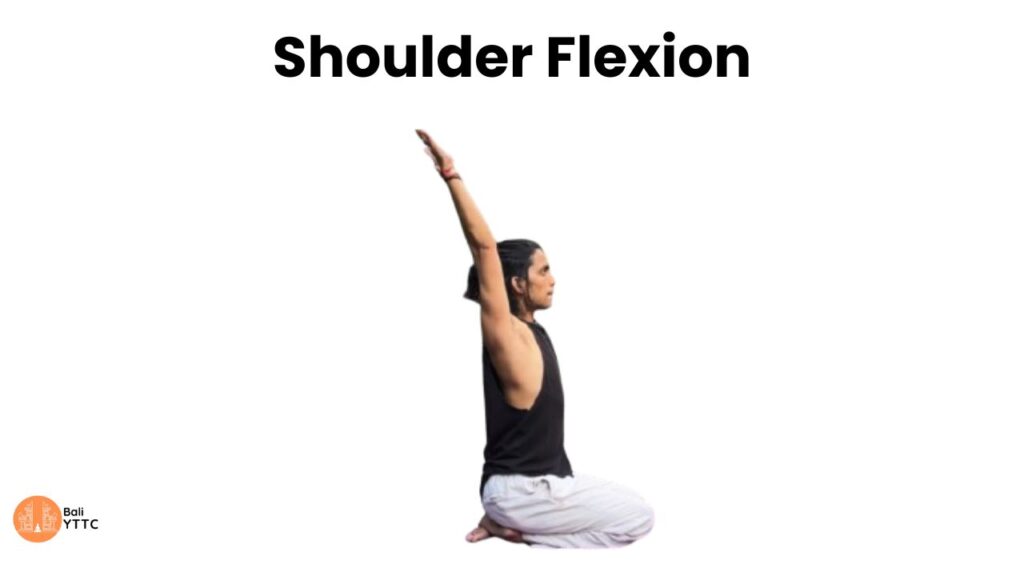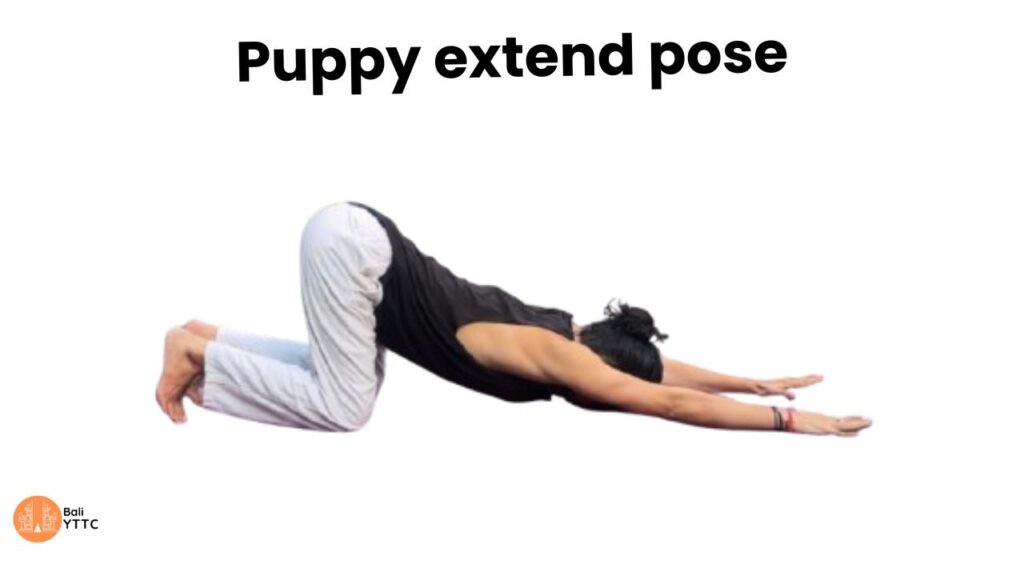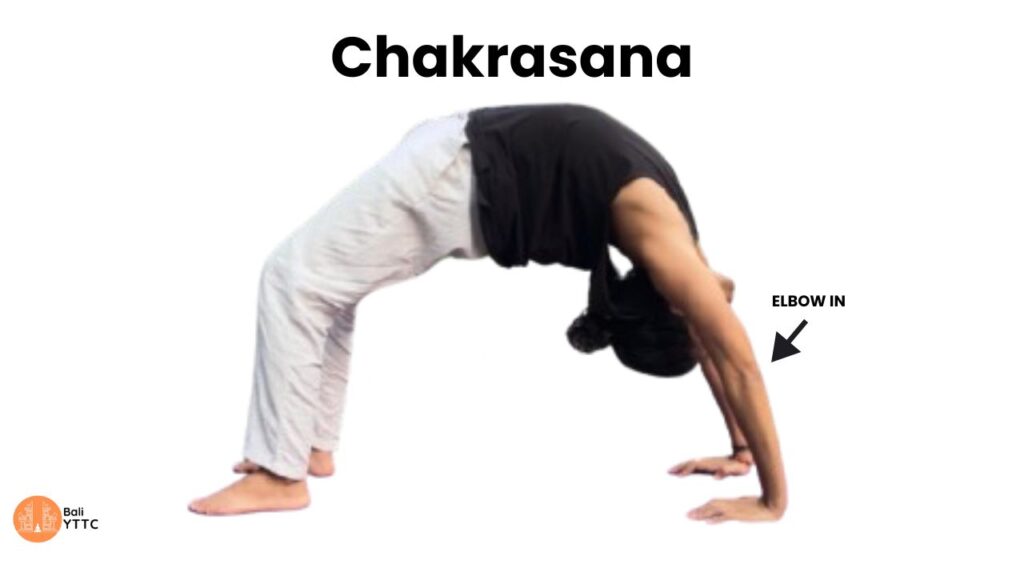I’ve seen many people suffering from shoulder and back pain after doing backbend Yoga poses. This mostly happens when people try Chakrasana or any intense backbend. Then, the question comes to mind: The backbend is supposed to be a good strengthening exercise for the back and boost our energy. So why the pain?
What are the reasons we feel pain later, and how can we avoid those things while practicing the Backbend Yoga pose? At the end of this blog, we’ll learn how to prevent all this pain and improve our backbend.
Here are some reasons that can give you injury and how you can improve:
Reason #1 – Shoulder flexion
First Thing I noticed for beginners is that they do all the backbend poses for warmup before trying chakrasana, But they don’t do the Shoulder Flexion exercise. These shoulder flexion exercises are as important as Backbend.
A Healthy human shoulder flexion range is 180 degrees. Beyond that, if you want to move your hands, either you have good upper back flexibility(a good idea) or you have to bend your elbows and internally rotate your arm to take your hands back(A Bad Idea).
This is the reason People have very tight Back extensors like Lats and Teres Major, Muscles like Pac, and tight upper back, and they lift their arms for full flexion of the shoulder. Then they might feel that the humerus bone is rotating inward and the elbow moving outward, and once they are in this position in chakrasana, it will create instability in the shoulder joint and also compression in the shoulder joint (glenohumeral joint).
Then you have to give up the posture or might fall and injure yourself. Therefore you must do shoulder flexion exercises at least 5 minutes before you try chakrasana. Here is one variation below you can Try (3 Times X 20 Breath ). do it slowely and then last set faster.

Reason #2 – Tight Upper Back
The upper back bend is the main factor in backend. I’ve seen people are trying to make their lower back flexible and always put pressure on lower back.
Let’s talk about the spine first, The spine is divided into 4 parts, 1st is cervical, 2nd Thoracic, 3rd Lumber, and 4th Sacrum. The cervical is the upper part of the spine(neck) which is already flexible, therefore we do not have to work on the flexibility of the neck, hence we should avoid putting pressure on the neck.
The Lumber is the lower part of the spine above the sacrum, Which carries all the weight of Your upper body. it doesn’t have any support around like rib cages, but core muscles protect it, so according to body structure and center of gravity, Lumber has an inner curve (Extension) like the cervical.
Because it carries upper body weight above the hips, we should make lower back muscles stronger, so we can stay in the COG range. and If you are trying to make your lower back flexible, it might create pain later as it moves away from the COG (Center of gravity). that creates instability in that area of the lower back. that is why we should make it strong.
The Sacrum is the lowest part of the spine along with the tailbone(coccyx). That connects our upper body to the hip bone and forms the sacroiliac joint. so we can’t make it flexible.
The Thoracic is middle – upper part of the spine, which goes from c7 – T1 and is made of 12 vertebrae ( T12). As we grow older, Our thoracic region moves out from the Center of gravity, depending on our lifestyle. This curve is known as kyphosis.
This Kyphosis puts pressure on the lungs and causes short breathing later, and if you want to live a happy energetic life, you need more oxygen, Right? so that is the reason we should work on our upper back always, so we can breathe properly. and it makes us feel more open, more alive.
As a beginner, it is a problem for some time, Why? This Question I’ll leave for you, so you can experience yourself. Well i have shown one pose below, this pose is perfect for enhancing upper back mobility with different modifications. Happy upper back bending.

Reason #3 – Who should engage buttocks?
Remember when you engage your buttocks, your thigh rotates outward, that creates compression in sacrolliac joint as you go deep in back bend. but there’s one more thing happens when you engage your hips, that is hip extension.
That releases pressure from the back so you can open your heart more, that’s the real goal of backend, to open your heart chakra and stretch your front of the upper body.
There I have advice for different body types Because I’ve done so many backbends in my life. I used to think grabbing my ankle is all I needed, but actually, to grab my ankle, Nobody told me how this muscle activation works, and I end up injured myself, this is why you must practice under good teacher.
Anyway if you don’t have proper teacher, you can follow this Blog, it will help you to do proper backbend. I’m gonna write for beginner and advanced both:
Backbend for Beginner— If you are a beginner, always use modification. That will be really helpful for you. As a beginner, I would like to engage my buttocks and be more stable in the lower back region. At the same time, I would like to put brick between my thighs to activate adductors to make sure I don’t compress my sacrum against the ilium, and I will work on the upper back.
so if you just enjoy gentle backbend, and don’t have any goal to reach the ankle, then you can engage butts , get a gentle hip extension and focus on chest opening. You won’t feel uncomfortable or compression.
Backbend for Advance— I always wanted to grab my ankle without any proper knowledge of backbend muscle activation, and I injured myself. Later, I observed that if I engage my buttocks in a deeper backbend, I’m ending up compressing my sacrum against the ilium (Sacroiliac joint). I relaxed my hips and was comfortably doing a backbend, but I was feeling like a muscle lump in my lower back. To be fair, that’s better than compression in the sacroiliac joint.
If you want to go deeper in the backbend, Relax your hip, or if it is hard to relax in the beginning, so use the brick between both thighs, at least it won’t let your knee and hip fall outward. and you will be able to backbend with your full flexibility with less pain and compression, but in deep backbend relaxing your hip is best key.

Here are some Postures You can Try
There are some poses I felt that a beginners should always start with this sequence, so they don’t hurt themselves during Backbend !!




